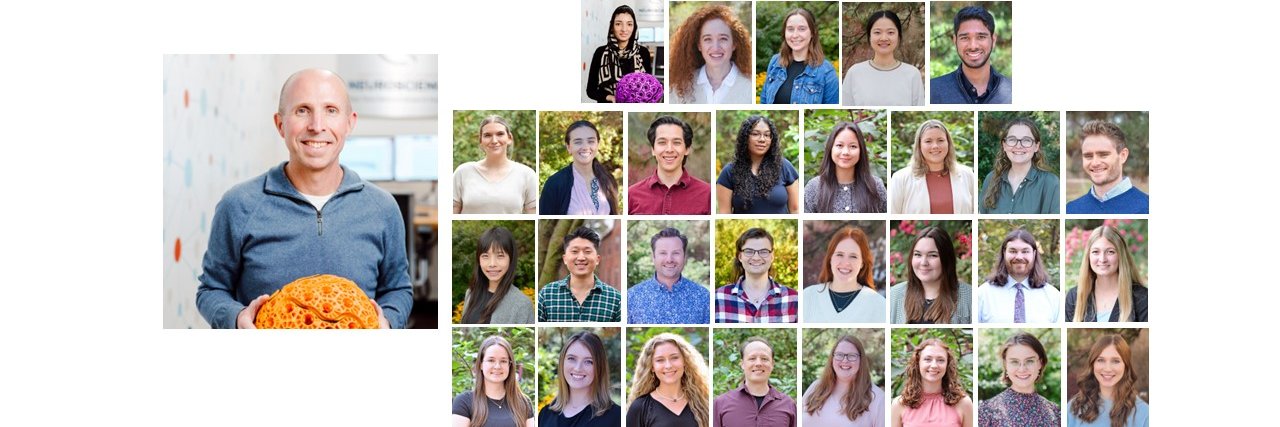
DICoN Lab
@DiconLab
Human neuroimaging laboratory based at the Boys Town National Research Hospital near Omaha, Nebraska.
Another eventful weekend at #IHN as members of @diconlab joined the @alzassociation in the #Omaha chapter of #Walk2EndAlz this past Sunday morning. #ENDALZ #ShowYourPurple #neuroscience #neuroimaging @ScienceisWhere @maggie_rempe
Thank you to @maggie_rempe @DiconLab @BoysTown_IHN and Dr. Tony Wilson amongst other coauthors, for all of their help on this! 9/
Why does that matter? Well, when we’re navigating the real world, we have to remember things despite inevitable distractions. This helps us understand how our brain does that. 8/
Aside from maintaining memory of that first grid, this is also when the distractor appears. Frontal regions are known to be involved in inhibitory control, so we think that what we’re seeing is more functional inhibition than maintenance alone. 7/
When we looked at the difference in conditions between low- and high-distraction, we saw increased activity in the frontal lobe during our high-distraction condition in both alpha and beta during maintenance 6/
We saw that, over time, this activity moved from the occipital towards the left parietal, and this was a decrease from baseline (with a brief increase in occipital beta activity) 5/
While we didn’t see any behavioral differences, there was cool neural activity in the occipital lobe in the alpha and beta frequencies 4/
Participants completed viewed a grid of 4 letters, then either a second grid of 4 letters or 4 # signs. They then saw a single letter and indicated if this was in the first grid or not. The idea was that viewing letters (vs #) would be harder (high- versus low-distraction). 3/
We used magnetoencephalography (MEG) to examine brain activity in 46 healthy adults. For a brief explainer on MEG, check out this blog post I wrote with @KnowingNeurons knowingneurons.com/blog/2024/09/2… 2/
Congratulations Megan on your most recent paper! 🥳 #IHN #neuroscience #neuroimaging #IHNpapers #IHNpublished #DICONpapers #DICONpublished
I’m excited to announce our recently accepted publication in Neuroimage focused on working memory! Thread 🧵 1/ sciencedirect.com/science/articl…
And that's a wrap for #IHN at #flux2024! Check out some of our team in action throughout the weekend. See you next year! #IHNConferences #neuroimaging #Neuroscience #NeurodiversityLab #CASILab #DICONLab #BRAICLab
Hold onto your hats! Tonight, poster session 2, 5:30 - 7pm: - Sarah Hunter (#NeurodiversityLab) - SU57 - Zhiying (Mike) Shen (#CASILab) - SU82 - Hua Bai (#DICONLab) SU109 - Monica Clarke-Smith (#NeurodiversityLab) -SU116 #IHN #IHNConferences #neuroscience #neuroimaging #flux2024
But wait, there's more from #IHN! Tomorrow morning (Sunday), PhD candidate from the @DiconLab, Jake Son will present during the congress flash talk at 10:30am. #IHNConferences #DICONLab #neuroscience #neuroimaging #mdphd #flux2024
Kicking things off in tonight's poster session (Saturday) from 4-5:30pm: - Jackson (Jesse) Derby (DICON lab) - poster S22 - Zhiying (Mike) Schen (CASI lab) - poster S25 - Thomas Ward (DICON lab) - poster S82 #flux2024 #DICONLab #CASILab #IHNConferences #IHN #neuroscience
Peihan J. Huang, an RA in @Diconlab presenting her poster "High-definition transcranial direct current stimulation of left primary motor cortices modulates beta & gamma neural activity during response competition" at #NYCN2024 #IHNconferences #IHN #neruoscience #neuroimaging
Tara Erker, an RA in @diconlab, presenting her poster, "High-definition transcranial direct current stimulation modifies network-level activity serving attention reorientation" at #NYCN2024 #IHNconferences #IHN #neuroscience #neuroimaging
Dr. Yasra Arif presenting this morning, "High-definition transcranial direct current stimulation of the motor cortices induces polarity-dependent effects on neural oscillations within the distributed motor circuitry - young vs older adults" #NYCN2024 #IHNconferences #IHN